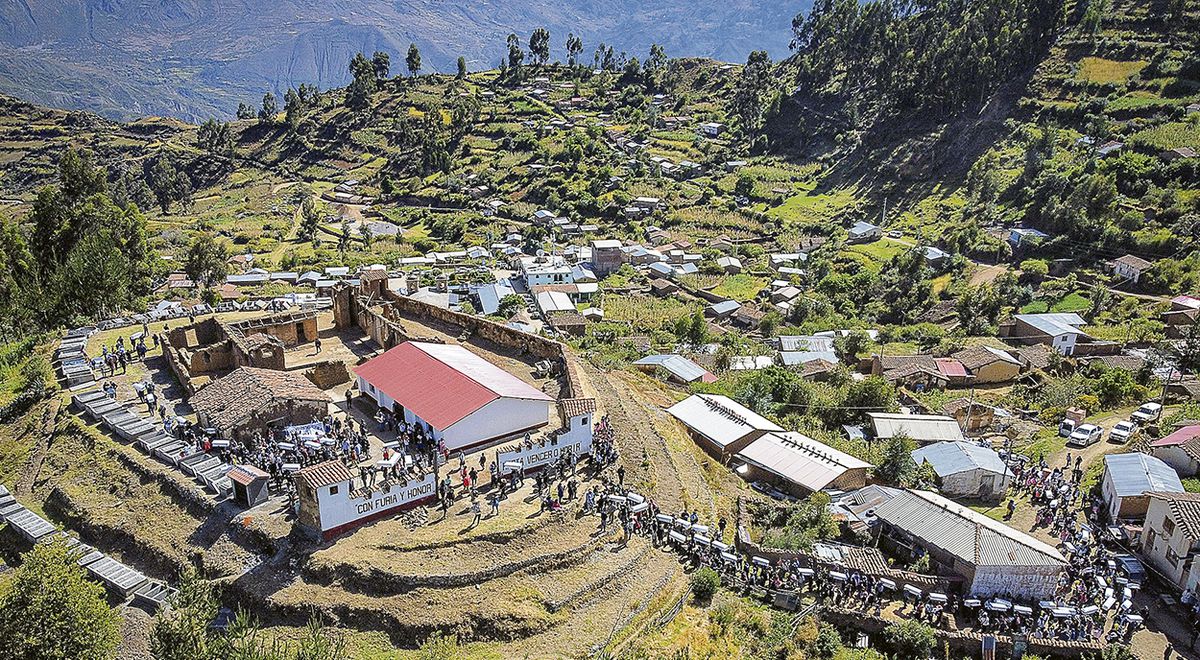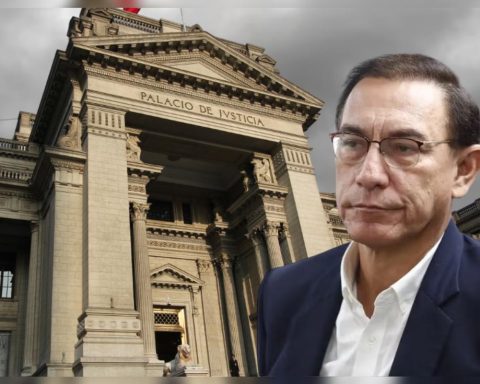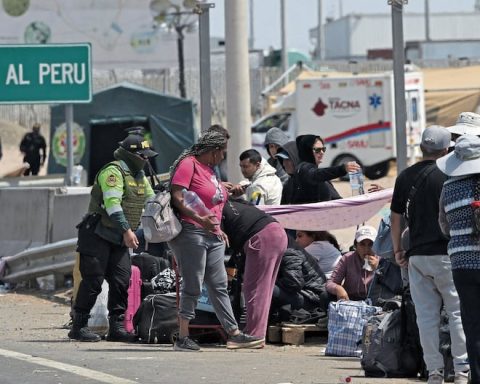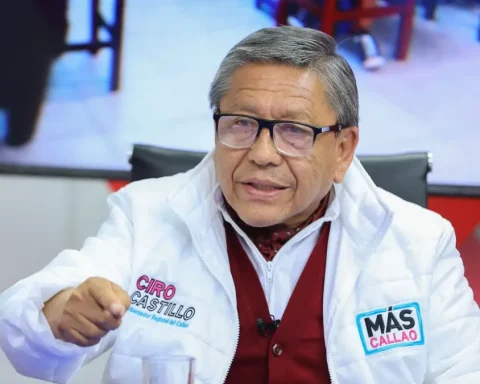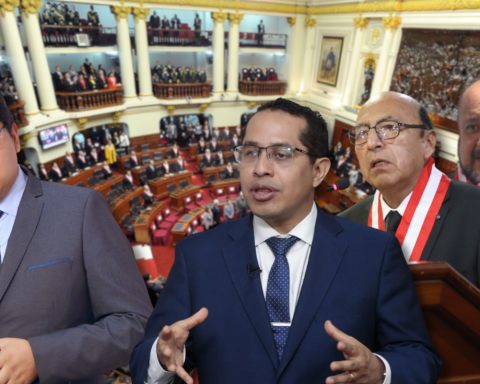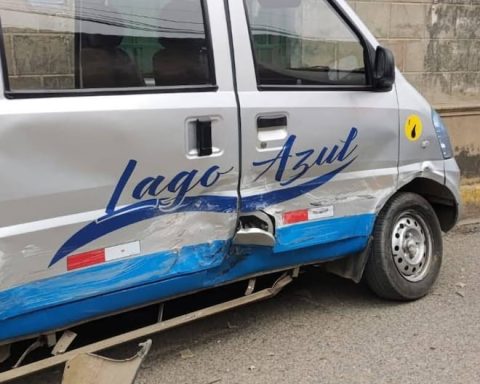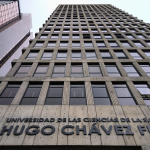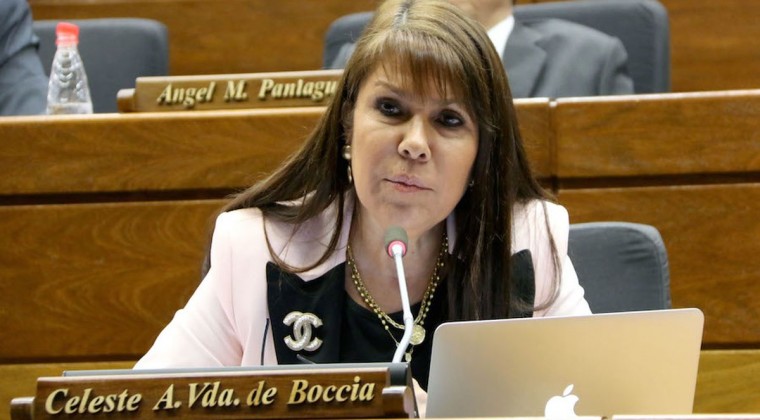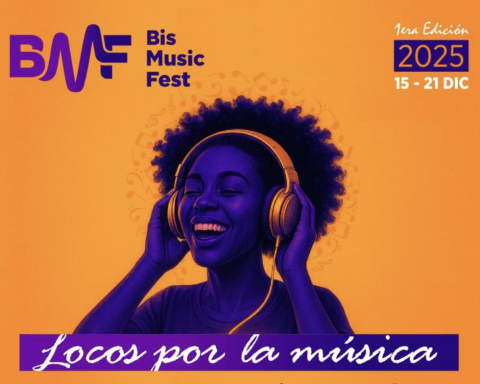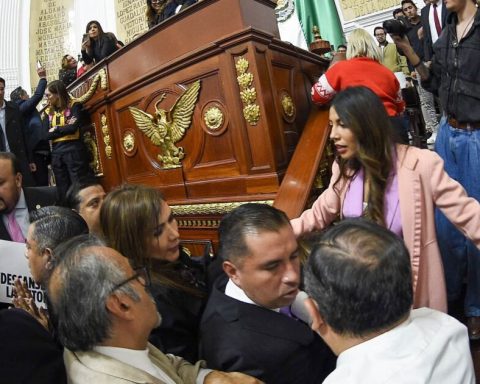Chronicle
“Justice and reparation for Accomarca”, harangued the relatives of the 79 people killed by military personnel in August and September 1985, as they were carried in white coffins to the place where moments later they would be buried.
The entire town gathered to watch the long row of crates pass by containing the remains of men, women and children who were riddled with bullets and set on fire in one of the worst massacres committed by members of the order who supposedly came to protect them from the terrorism.
Children, fathers, mothers and siblings of the victims went by their side carrying flowers and photographs or drawings based on their memories, as in the case of the five Ochoa Lizarbe brothers, the youngest, Edwin, who was only one year old, and the oldest, Toribio, 12 years old.
YOU CAN SEE: Ayacucho: Accomarca buries its victims
In procession. A long line of white coffins ran through the streets of Accomarca. Photo: John Reyes/The Republic
In total, the official list recognizes the execution of 33 minors. The youngest, Marisol Baldeón Palacios, was barely 3 months old.
They left the town to the beat of a band, as they usually say goodbye to their dead.
“Goodbye people of Accomarca, pearls challay…”, they sang as they climbed the road towards the sanctuary built on a hill, where there are still walls and vestiges of the military base that was installed a few months after the massacre.
“Demetria Lizarbe Solís…”, they called. “Present”, they answered. She is one of the victims who, on August 14, 1984, attended the meeting of the military to go to LLocllapampa, without knowing that they would be executed. She came with her five children.
YOU CAN SEE: Soras: it remains to locate more than fifty victims of Shining Path
The same invocation was made with each of the deceased until reaching the summit.
Two days ago this process began to restore 79 deceased, of which only 47 are fully identified by the work of the Specialized Forensic Team (EFE) of the Public Ministry and the Peruvian Forensic Anthropology Team (EPAF): 10 have been kept in the municipality of Accomarca, and 37 later they were returned in yesterday’s ceremony.
In six cases, only the garments will be delivered and there will be another 26 symbolic restitutions with coffins that carry their clothes or rosaries, since no coincidence has been achieved with the relatives, due to the degree of calcination of the remains.
Heartbreak. Two nights the remains were veiled in the town church. Photo: John Reyes/The Republic
expected return
Last Wednesday, after a long wait of 37 years, the remains arrived at Accomarca. They were in paper envelopes and in boxes duly individualized, after having been fully identified by laboratory tests. In other cases, there were only clothes or ashes from burned bones.
Tencia Gamboa Pulido was there to welcome them. In the massacre she lost her parents and her little brothers Francia, 8 years old, and Néstor, 11.
YOU CAN SEE: Apurímac: Prosecutor’s Office delivers skeletal remains of 2 victims of terrorism
“Right now I received from my little sister just her little head. I have not received anything from my mother. Her clothes just hers. From my brother there is nothing, there is nothing, ”she said.
She was saved from death because months before she had traveled to Lima escaping extreme poverty and political violence.
“That’s why I ran away. I don’t know how to read, I don’t know how to write, I don’t even know how to use a cell phone, but I keep looking, asking questions, looking for my parents, my family,” she said, showing the adobe house where they lived in Lloccllapampa, the same one where her relatives were murdered along with the other victims. Nearby, they were buried in a hurry in a grave, fearing that the soldiers would return.
That place was an obligatory stop as part of the process to close the wounds. Some survivors briefly shared the horror they witnessed, and were spared by hiding.
YOU CAN SEE: Advisors to Bermejo and Palacios would have paid to silence a witness who accuses Cerrón of terrorism
Return. The remains of Filomeno Chuchón were delivered to his daughter. One of the few almost complete. Photo: John Reyes/The Republic
“It is difficult to remember everything that has happened…”, sobbed Cirila, who in 1985 was a 12-year-old girl.
“On Wednesday, August 14, the military arrive. When I heard the shots, all this pampa was surrounded by soldiers… They all took them by that molle. If I spoke, everything would count, ”he expressed. His mother is one of the victims.
She was on the other side of the creek. “When they saw me, they started shooting. Bullet here, passed there, but she did not hit me, ”she recalled.
He says that out of fear they were living in the mountains until, weeks later, a commission from the Congressand they came to tell them.
“When we came back it was a ghost town. We didn’t even have enough to eat,” she lamented.
YOU CAN SEE: Huanta, 1984: the search for almost a hundred missing people continues
Duel. With tears and songs the victims were buried. Photo: John Reyes/The Republic
the fight continues
The relatives feel comforted by those who have been restored, but they will not be totally calm for those who are missing and for those who did not obtain justice.
“There are some people who have not been recognized and are left in a kind of limbo. They do not appear in the sentence, but they are in the memory of all those who lived through those events. That is why the fight continues,” Aprodeh’s lawyer, Gloria Cano, assured the relatives, referring to the witnesses murdered in September 1985, in order to hide the facts.
The case is before the Inter-American Commission on Human Rights, pending a substantive report.
In addition, most of those convicted are still at large, such as the political-military chief of Ayacucho, Wilfredo Mori Orzo, who authorized the plan to eliminate the residents who were terrorists for them.
YOU CAN SEE: Operation Chavín de Huántar: 25 years after the release of the hostages of the Embassy of Japan
many shortcomings
Accomarca seems like a forgotten town, where the population has many deficiencies. Its mayor, Francisco Ochoa, points out that many communities do not have a health service and, since there is no employment, many migrate.
“It wasn’t like that. It was very populated. It must have developed. After the massacre, many have not been able to access higher education. Those who migrated have suffered,” she maintained.
He demanded that a minimum way to compensate them for what happened is to attend to the priority needs of the population. They need an extension of the road, health and education.
“We hope that (the premier) upon arrival at Accomarca be indignant, and pay attention to this town. From the day they made our lives miserable, to date, the only thing they have left us is sadness, pain and poverty. The State must give priority to the peoples affected by the violence”, he demanded.
YOU CAN SEE: Chronicles of the horror years
The coordinator of the Human Rights Prosecutors, Daniel Jara, recognized the tenacious struggle of the relatives to recover the remains of their victims.
He stressed that the identification of the remains was a challenge due to the context in which the massacre occurred, and it was made possible by the joint work of the Prosecutor’s Office, the forensic team, the General Directorate for the Search for Disappeared Persons and the International Red Cross.
He stressed that in the same way they will continue working to try to restore the thousands of missing persons pending.
The data
If you have information to help find Accomarca’s missing victims, call the General Directorate for the Search for Disappeared Persons. Telephone: 204 8020, annexes 2921 and 2923.
The slaughter was revealed. Photo: The Republic
The official version. Photo: The Republic
Stolen in Congress. Photo: The Republic
